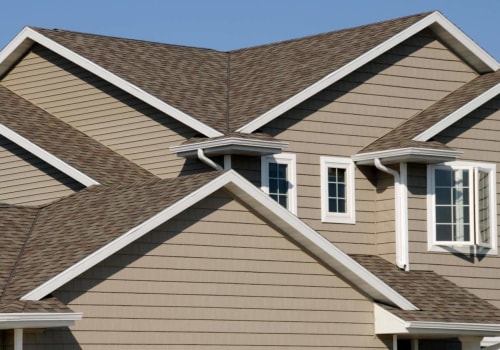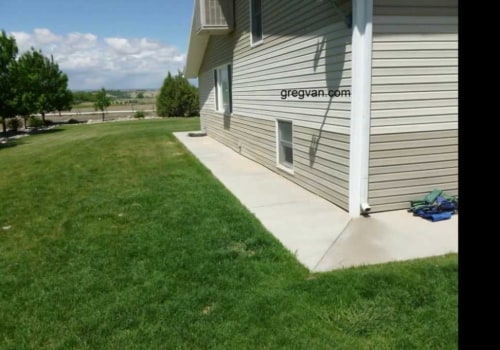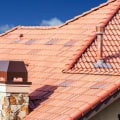Roof replacement is a significant home improvement project that many homeowners will encounter at some point. While the process of replacing a roof is essential for maintaining the integrity and safety of a home, it often raises concerns about the noise level involved. For those who have never experienced a roof replacement before, the question of whether the process is loud can be a source of anxiety, especially if they live in a neighborhood with noise restrictions or have young children or pets at home. This discussion explores the noise levels associated with hiring a roofing contractor in Vancouver, Washington for roof replacement, what to expect during the process, and how homeowners can prepare for the inevitable sounds that come with it. Roof replacement is a significant home improvement project that many homeowners will encounter at some point. While the process of replacing a roof is essential for maintaining the integrity and safety of a home, it often raises concerns about the noise level involved. For those who have never experienced a roof replacement before, the question of whether the process is loud can be a source of anxiety, especially if they live in a neighborhood with noise restrictions or have young children or pets at home. This discussion explores the noise levels associated with hiring a roofing contractor in Vancouver, Washington for roof replacement, what to expect during the process, and how homeowners can prepare for the inevitable sounds that come with it.
The Nature of Roof Replacement Noise
Roof replacement is indeed a loud process, primarily because it involves the removal of old roofing materials and the installation of new ones. The noise level can vary depending on the type of roof being replaced, the materials used, and the tools required for the job. For instance, asphalt shingles, one of the most common roofing materials, require the use of nail guns, hammers, and other heavy-duty equipment that produce significant noise. Additionally, the process often involves workers walking on the roof, which can create a lot of foot traffic noise, particularly on older or more resonant structures.
The removal of the old roof is typically the loudest part of the process. It involves prying up old shingles or tiles, which can be especially noisy as they are ripped from the roof deck. The sound of debris being thrown into dumpsters or onto the ground below can also add to the overall noise level. Following the removal, the installation of the new roof involves hammering or nailing down the new materials, which can create a consistent and repetitive noise that lasts for several hours or even days, depending on the size of the roof and the complexity of the job.
Factors That Influence Noise Levels
Several factors influence the noise levels during a roof replacement. The size of the roof is one such factor—the larger the roof, the more time it will take to replace, which means the noise will last longer. The type of roofing material also plays a role; for example, metal roofs can be particularly loud to install due to the nature of the material and the methods used to secure it. The number of workers on the job can also impact the noise level; more workers mean more simultaneous activities, which can increase the overall volume.
Another factor is the condition of the roof deck. If the deck is in poor condition and needs repairs before the new roof can be installed, this can add additional noise to the process. The tools used by the roofing crew, such as air compressors, power saws, and nail guns, also contribute to the noise. These tools are essential for the job but can create a significant amount of sound, especially when used continuously throughout the day.
Managing and Preparing for Roof Replacement Noise
While roof replacement is inherently noisy, there are ways for homeowners to manage and prepare for the disruption. One of the most effective strategies is to plan the roof replacement during a time when the noise will be less disruptive. For example, scheduling the work while family members are out of the house for work or school can help minimize the impact. If you have pets or young children who might be sensitive to the noise, it might be worth considering temporary arrangements, such as staying with friends or family during the loudest days of the project.
Another approach is to communicate with your roofing contractor about your concerns regarding noise. Experienced contractors can often provide insights into the expected noise levels and suggest ways to minimize disruption. They may also be able to use quieter tools or work during specific hours to reduce the impact on your daily routine. For those who are particularly sensitive to noise, investing in earplugs or noise-canceling headphones can provide some relief during the roofing process.
Conclusion
In conclusion, roof replacement is a loud process, but understanding what to expect can help homeowners better prepare for the experience. The noise is a natural part of the work required to maintain and protect a home, and while it can be disruptive, it is also temporary. By planning ahead and taking steps to manage the noise, homeowners can minimize the impact on their daily lives. If you're considering a roof replacement and want to explore different materials that might offer quieter installation processes, it’s helpful to see product options that are specifically designed with noise reduction in mind. Ultimately, the benefits of a new, durable roof far outweigh the temporary inconvenience of the noise, ensuring the long-term safety and comfort of your home.






